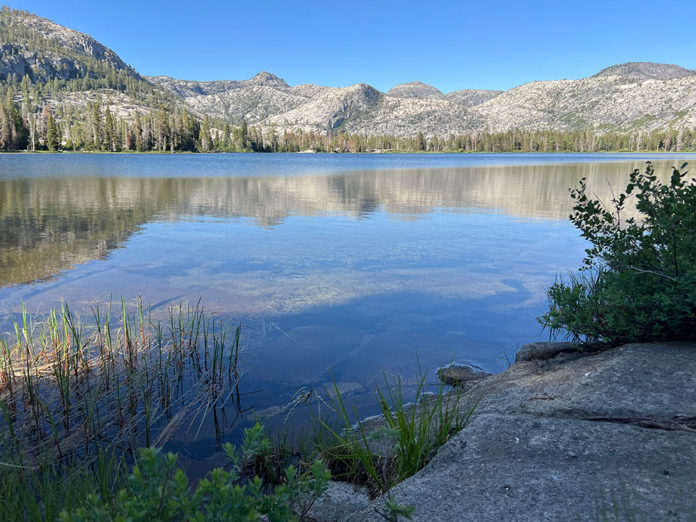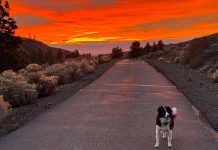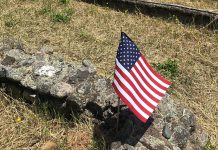
By Pierre Ratte
In the granite mountains of Yosemite National Park, in the upper plateau of the Hetch Hetchy watershed, lies Lake Vernon encircled by rock walls and piney shores. It’s home to crystal clear snowmelt water and beautiful rainbow trout. While backpacking the Hetch Hetchy Loop—28 miles and 6,000 feet altitude gain—we were fortunate to catch five rainbow trout from Lake Vernon. Dinner was vastly improved over dehydrated packaged foods sealed in bearproof containers, now required for any wilderness permit in Yosemite.

July could be the perfect month for this hike. The snowpack melted a month or more ago. Meadows dried out so as not to be muck and mire, yet moist enough to host wildflowers chest high obscuring the trail. Pushing the flowers aside created many sweet fragrances.
The weather was warm. Critters and birds were out to partake in nature’s bounty of seeds and sunshine. A blue-tailed skink and a king snake sunned themselves on different trail segments. A bald eagle plied the lake; fish broke the surface all afternoon. Bears wandered, not really bothering anyone, passing by several young women cowgirl camping.
Sometimes one just must get out of the house, out of the car, and take a walk around to recalibrate as a human being, not a human doing. No better place to recalibrate to nature’s rhythms than Yosemite, especially its wilderness trails where nary a person is seen.
Fun facts: High mountain trout are prized in German and Swiss restaurants; one might see them on menus as hochgebirgsbachforelle. A skink is a lizard, but not all lizards are skinks. Cowgirl, or cowboy camping, is camping without a tent, sleeping under the stars beneath a blanket or in a sleeping bag.
Lake Vernon’s largely granite basin contributes to its exceptionally clear water. Similarly, granite-lined creeks flowing into the Hetch Hetchy reportedly flow unfiltered through aqueducts to San Francisco as drinking water—a rarity in U.S. public reservoir systems.
Dome formations in Yosemite and Hetch Hetchy are an after-effect of glaciation. The weight of glacial ice, called overburden, compresses granite. When the ice melts, compressed rock tries to return to its uncompressed form, in a process known as “isostatic rebound.” The uppermost layers release along weathered cracks or fault lines. This release creates “thunking” noises echoing through the park’s valleys, more easily heard out on the trails than on Yosemite’s busy valley floor.








